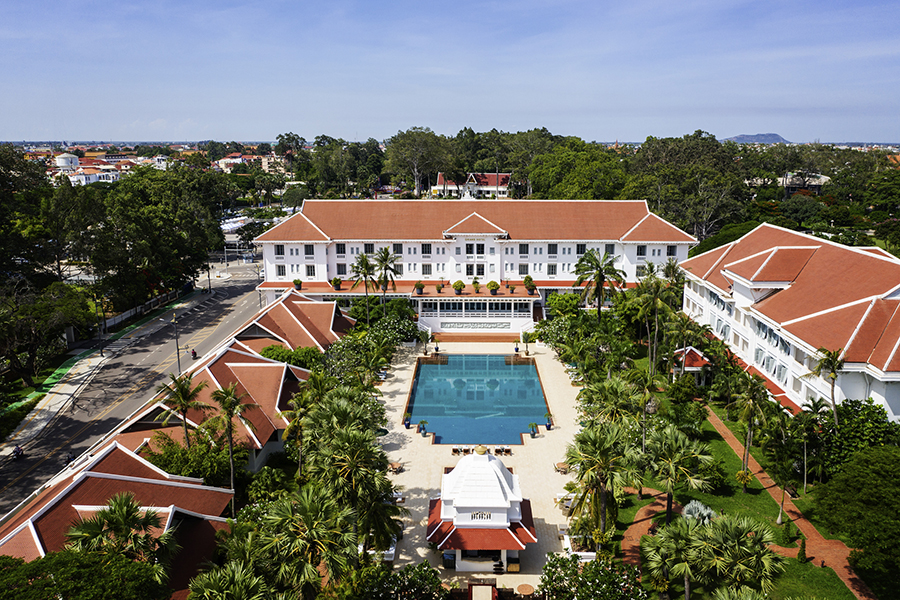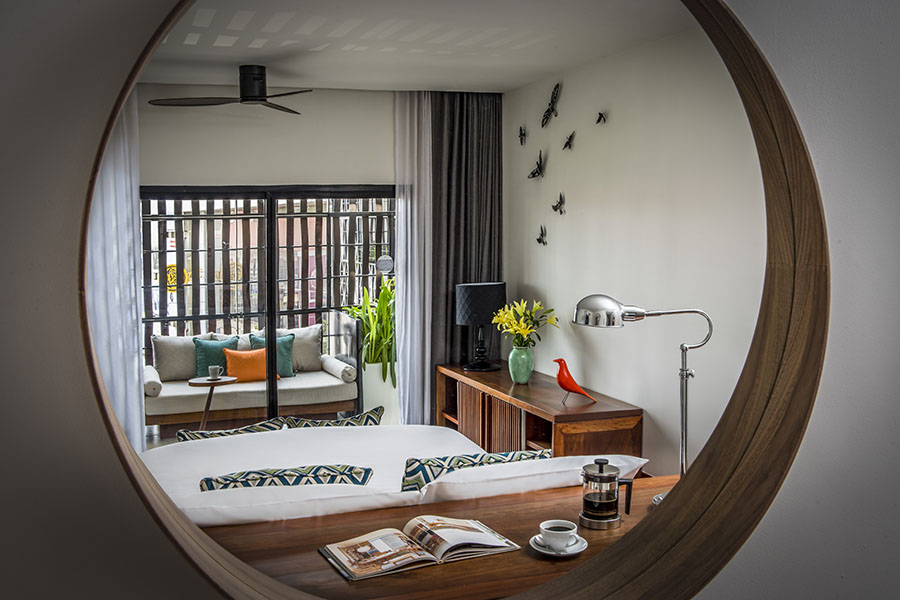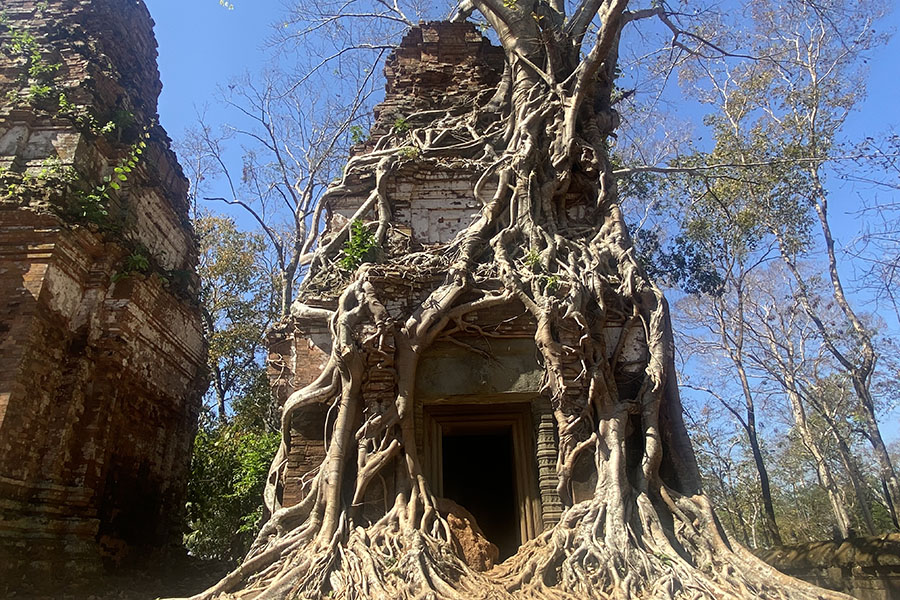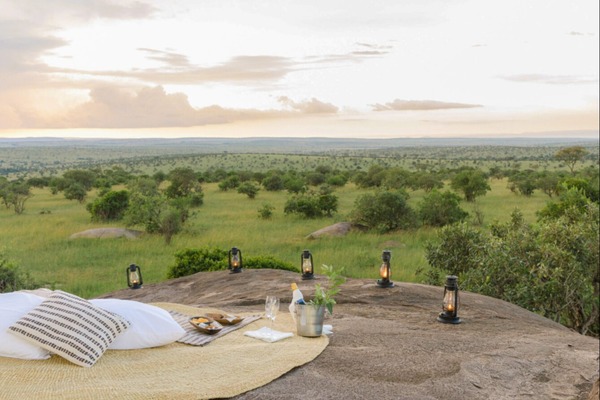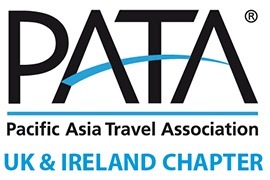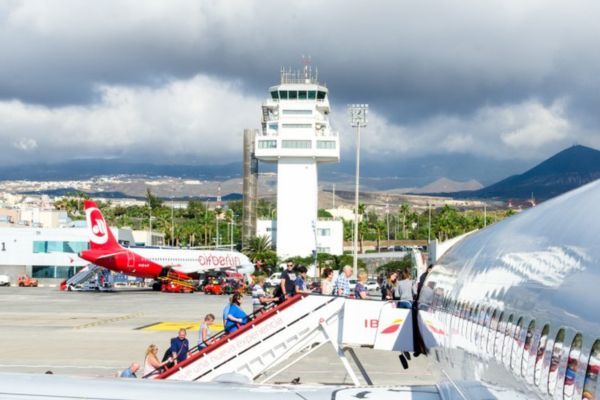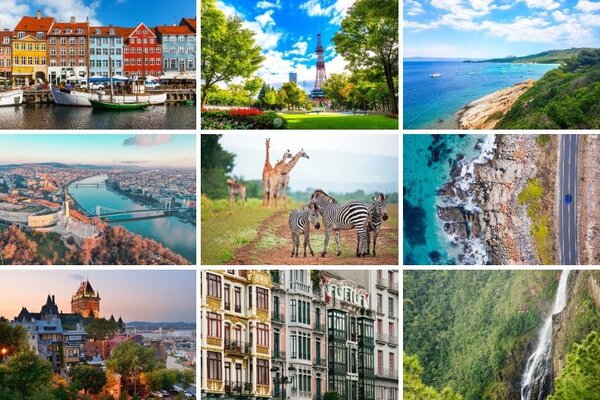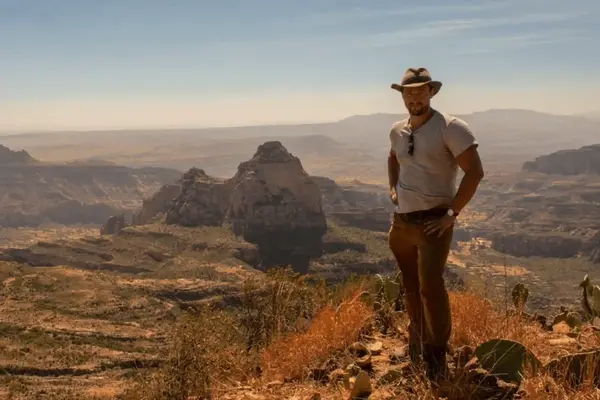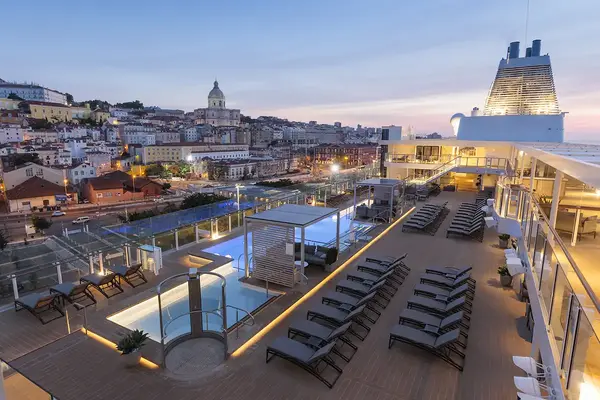Introduce your clients to the new Siem Reap
Cambodia’s temple town is slowly raising its luxury game, with both hotels and restaurants adding more upmarket appeal, while a lost city hidden in the jungle offers an alternative to crowded Angkor Wat

In 2005 I rumbled into Siem Reap in a spluttering taxi, arriving overland from Bangkok. Its roads were unpaved, and my family-run hotel charged £10 a night. One day, I snuck into the nearby Hotel de la Paix to laze by the pool at what was then one of Siem Reap’s few five-star hotels.
Nineteen years later, I fly into the shiny new Siem Reap-Angkor International airport. Although an hour’s drive from Siem Reap (its predecessor was closer), it accommodates more planes, including services hopping over from Hanoi and Ho Chi Minh, both connected to the UK via recently launched Vietnam Airlines routes.
The centrally located Hotel de la Paix is now the Park Hyatt Siem Reap, one of numerous luxury hotels. The Raffles Grand Hotel d’Angkor is the oldest – a time capsule founded in 1932, taken over by Khmer Rouge soldiers in the 1970s and used as a base for various Angkor Wat-admiring celebrities, including Charlie Chaplin in 1936. Reminders of its history include the wrought iron elevator and suite names honouring former guests such as Jacqueline Kennedy. I learn more about its past during a chat with in-house historian Saravann, who points to the hotel’s gardens. “Years ago, this is where elephants would collect guests and take them to Angkor Wat,” he says.
More recent newcomers are forging their own path. At the art-filled Jaya House River Park (Cambodia’s first plastic-free hotel and the preferred base of various operators, including Experience Travel Group), there’s an Insta-friendly sofa made from fluffy duck toys in the lobby. There’s a plethora of inclusions – clients who stay here will enjoy a complimentary mini-bar and laundry, spa treatments and flasks from Refill Not Landfill, an organisation founded by the hotel’s managing director, Christian de Boer.
Then there’s the French Quarter’s Aviary Hotel, close to the artefact-stuffed Angkor National Museum and the Old Market, a brilliant spot for souvenirs and Cambodian silk. Used by various tour operators (such as Newmarket Holidays and Audley Travel), it’s modern and minimalist, with 43 rooms combining Palm Spring-style pops of colour with art deco furniture.
FOOD FOR THOUGHT
The hotel’s highlights include Fumizen, a slick Japanese restaurant signalling that Siem Reap’s culinary scene has evolved beyond the food stalls on neon-drenched Pub Street, where backpackers sink cheap pints of Angkor beer. Yes, downtown Siem Reap now has Domino’s, KFC and Starbucks, but there’s also a growing number of fantastic restaurants specialising in Cambodian cuisine. One example is Pou, founded by Mork Mengly, a Cambodian chef who champions local cuisine. His fragrant Battambang pomelo salad is very popular with customers.
Changes are afoot further afield, too. A rapidly expanding network of bicycle lanes is the reason many visitors now choose to explore Angkor Wat on guided cycling tours. In late 2023, a multi-year renovation of Angkor Wat’s causeway – the 200-metre-long stone pathway leading to the main temple – was completed. This means visitors can once again approach the temple via the original causeway, which was made from laterite and sandstone using 900-year-old construction techniques.
A forgotten city
Recently, several operators – including InsideAsia – have added another site to their itineraries: Koh Ker. In 2023, this temple complex, 80 miles north-east of Siem Reap, received Unesco World Heritage status. Much less is known about Koh Ker, built by King Jayavarman IV as an alternative kingdom to Angkor Wat. Its highlight is a seven-tier pyramid towering over more than 100 temples, some of which are in ruins. Koh Ker suffered heavier looting than Angkor Wat during the turmoil of the country’s genocide and civil war, which began in the 1970s, and many items passed through the hands of the late Douglas Latchford, a British conman who paid huge sums to locals who brought him stolen artefacts.
The appeal for his clients was Koh Ker’s dramatically different architecture style. Several of Koh Ker’s Brahmanic temples bear more detailed inscriptions, while many statues depict characters rarely represented elsewhere. Later I cross paths with American lawyer Brad Gordon, who’s dedicated his life to the recovery of Cambodia’s looted goods and was awarded Cambodian citizenship in recognition of his work. He cites the Prasat Krachap temple as a great example of what sets Koh Ker apart. “It has the most inscriptions of any Cambodian temple – thousands of names – serving as a testament to the genius builders of Koh Ker,” he says.
In many ways, Siem Reap is still a backpacker town at heart. Tourists flock to Pub Street’s Red Piano Bar to sip Tomb Raider cocktails (Angelina Jolie frequented the bar during the making of the film), dollars are the preferred currency and armies of tuk-tuks buzz around the town. But it is becoming more accessible, which is helping slowly shift the dynamic of visitors, and several hoteliers are placing bets on when there might be direct flights from the UK to Cambodia’s capital, Phnom Penh, or even Siem Reap.
Trade talk
Charlotte Bower, senior south-east Asia product executive at InsideAsia, says: “Siem Reap has undergone a lot of changes over the last few years, and the Wat Bo area has even been declared one of Asia’s “coolest neighbourhoods” by Time Out, due to its great cafes and delicious street food. Siem Reap, and indeed Cambodia, with its historical sites, rural landscapes, tropical islands and Khmer culture, offers so much and deserves its own dedicated spotlight.”
Book it: InsideAsia’s 11-night Into the Heart of Cambodia cultural adventure costs from £2,182pp excluding external flights; insideasiatours.com

